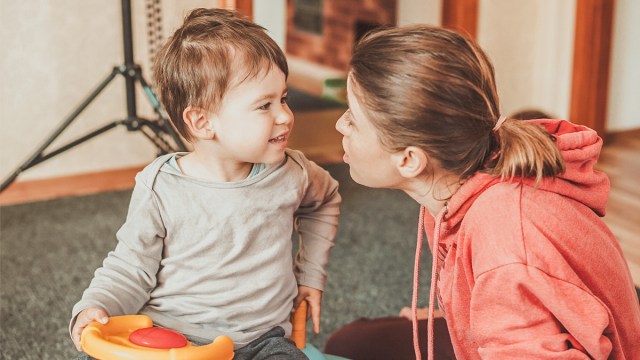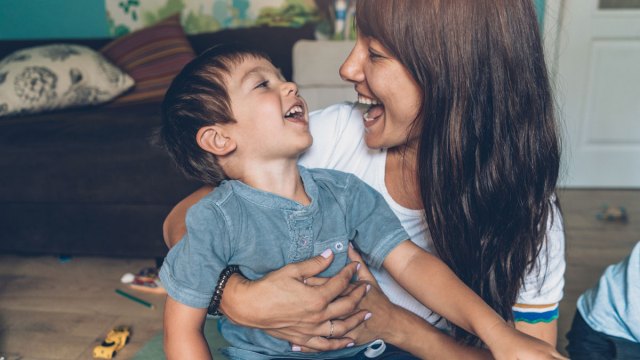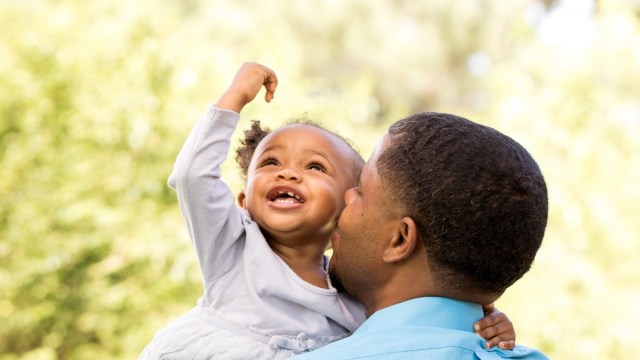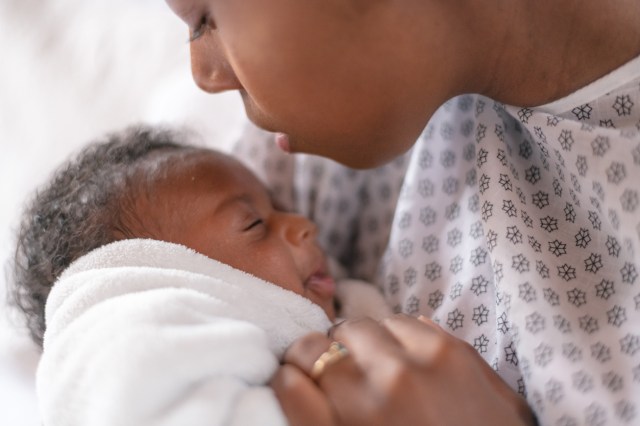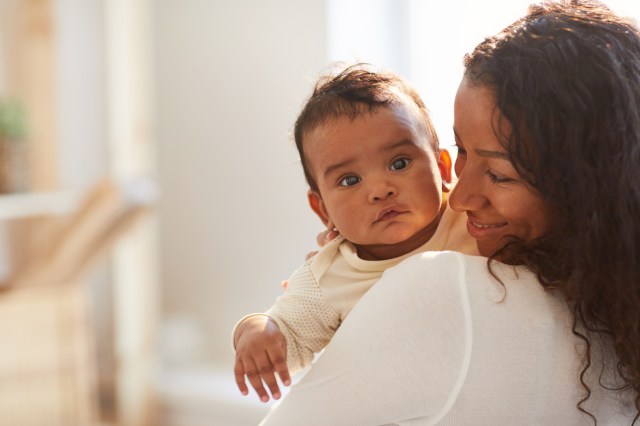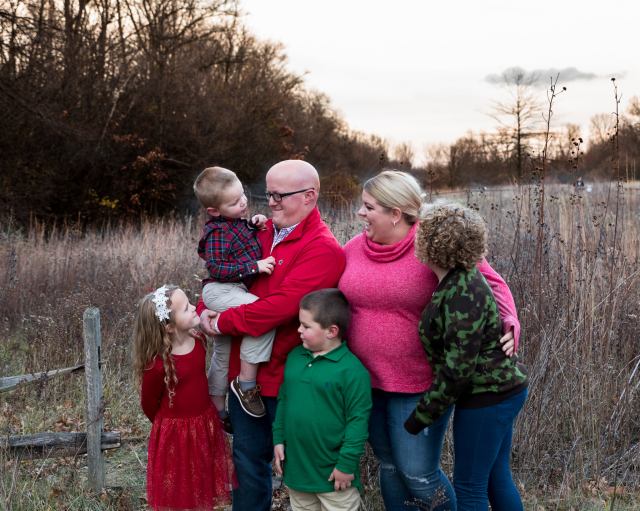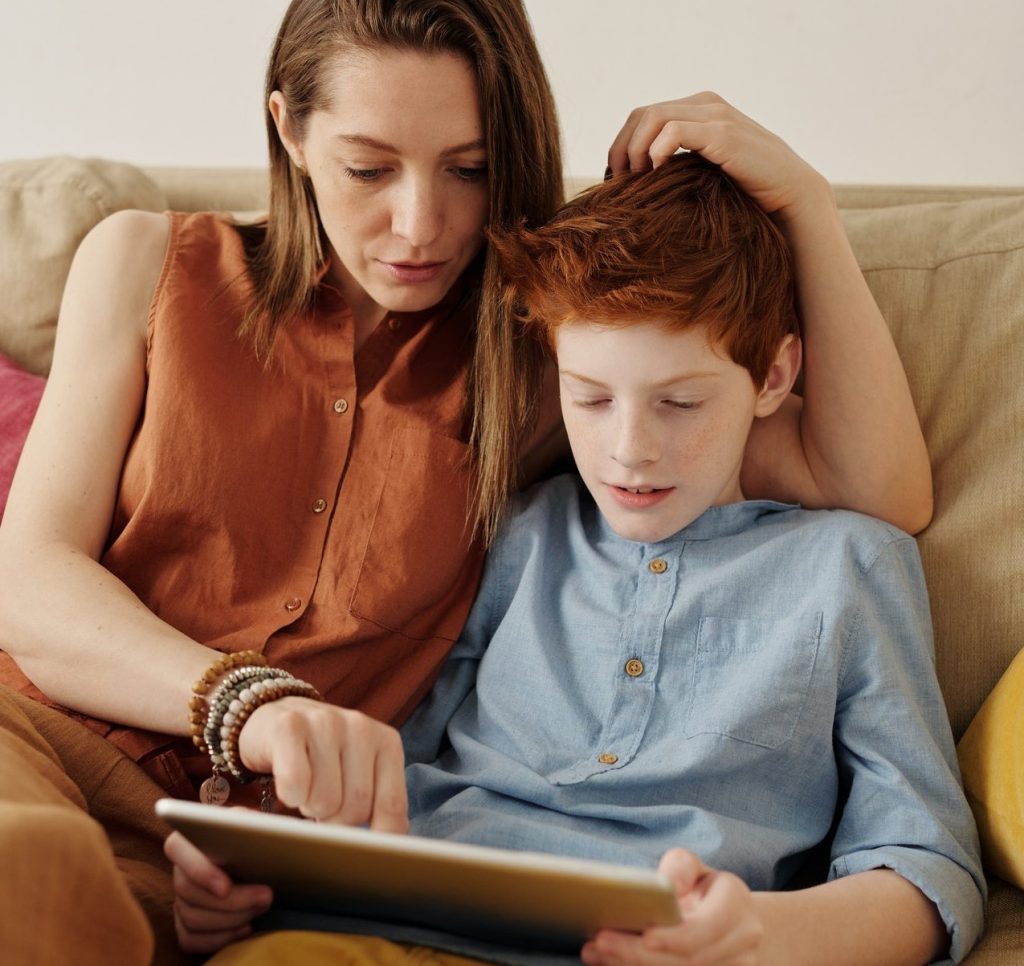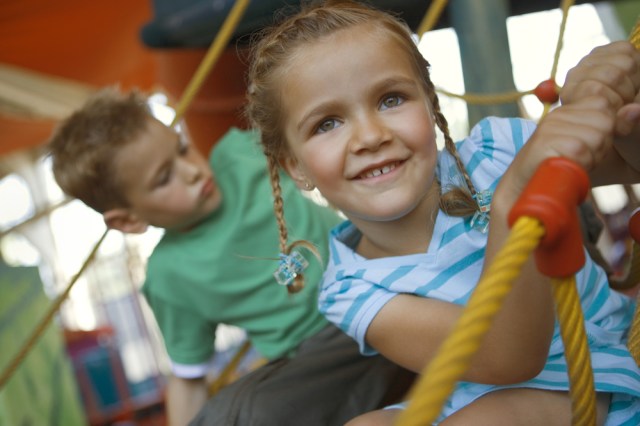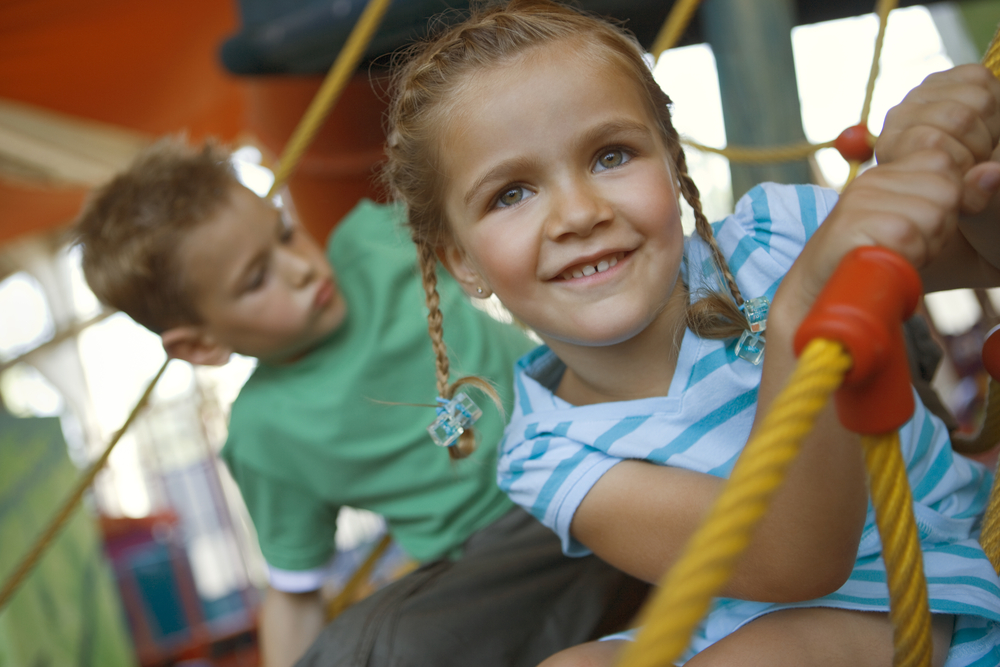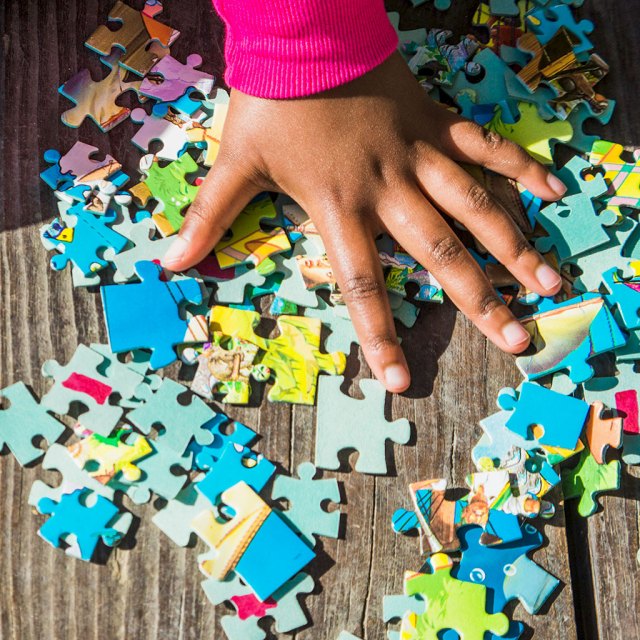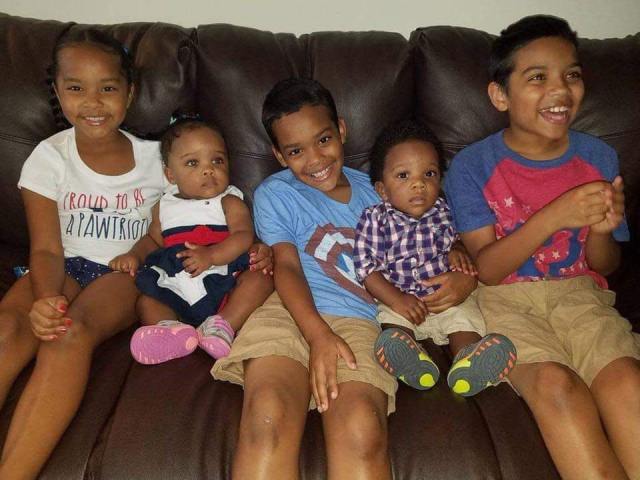Yup, kids say the cutest things—and it’s rarely on purpose. Some of the most memorable mispronunciations and creative phrasings happen when toddlers are learning to speak. In some cases, we’d love to freeze time and keep our kiddos asking for “strawbabies” forever, but what happens if these quirks continue beyond toddlerhood? How long is this phase developmentally appropriate, and when or for what types of speech issues should you seek professional help? We asked three speech-language pathologists to weigh in.
What does a speech-language pathologist do?
Unless your kid’s speech has been brought to your attention—say, from a concerned teacher or a chat with your pediatrician—you’ve probably never heard of an SLP. A speech-language pathologist (SLP for short) works in many different areas related to language and sound development, says Becky Medley, MS, CCC-SLP. This includes early intervention, the earliest of which would be for infants having difficulty feeding and swallowing.
Melinda W. Neal, MS, CCC-SLP, adds that an SLP assesses, diagnoses, and treats conditions in all ages and areas around language, speech and sound development, social communication, cognition, and dysphagia (swallowing) disorders. Once a particular issue is identified, they come up with a treatment plan that works best. With many play-based “tricks” in their bag for toddlers and little kids, a speech-language pathologist’s purpose can encompass a wide range of responsibilities, says Sarah Halpern, MS, CCC-SLP, and owner of Bright Speech LA.
What sounds are developmentally appropriate?
When kids are learning to talk, it’s totally common to hear some rather creative pronunciations. Halpern explains that when it comes to speech development, certain sounds are considered age-appropriate at different stages. So, in 2-year-old-speak, substituting a “D” for an “L” sound (like “piddow” for “pillow”) is appropriate. It becomes a cause for concern when specific sounds don’t develop past the expected age range. “By the age of three, most children should have clear production of common consonants like p, b, m, n, and d,” she says. “By age four, additional sounds like s, l, z, and v are generally expected.”
Neal seconds this, adding that toddlers often mispronounce words and have a hard time formulating grammatically correct sentences. “When learning to talk, young children are exploring different ways of using the speech articulators, like their tongue, teeth, and lips,” she says, and speech-language development is never one-size-fits-all. Still, a kiddo’s speech should improve over time.
When should parents consider a speech-language pathologist for their child?
While there’s no one sure way for your child’s speech and language to develop, there are signs that might tell you that early intervention speech therapy could be helpful. Halpern breaks it down like this: “If parents notice persistent issues or delays such as difficulty being understood by others, limited vocabulary, struggles with articulation, or delays in reaching expressive or receptive language milestones, it may indicate a need for speech therapy.” (Expressive language is the words children use to express themselves, and receptive language is what they understand.)
Medley offers general guidelines to help parents and caregivers look out for possible issues with speech development. “At about a year, you should start hearing some single words, and at two years old children should be combining an average of two words. Then at three years old, you want them using an average of three words together.” So, if by two years your toddler hasn’t uttered popular phrases like “More puffs” or “More Blippy” it might be time to seek a speech assessment.
To this point, Neal has compiled an easy-to-follow list of factors to help parents and caregivers decide if they should see an SLP:
- Difficult to understand: By 2 years old, toddlers should be understood by unfamiliar listeners at least 50% of the time. By 3 years old, toddlers should be understood 75% of the time.
- Speaks very little or not at all: By 2.5 years of age, toddlers should be understanding approximately 1000 words and using approximately 500 words. No, we don’t expect you to count them up (who has time for that?!), but you can tell if their speech and understanding are broad or more narrow.
- Has trouble following simple directions: Toddlers should understand simple prepositions, be able to point to objects, answer simple “what” and “where” questions, respond to their spoken name, and identify an object’s location.
- Stutters and/or repeats words or parts of words: It’s normal to occasionally repeat words, however, if a young child is frequently repeating words or parts of words, it’s best to seek the advice of an SLP.
What does a speech therapy session look like?
The good news is that speech therapy sessions are fun! Halpern says this means using games, toys, and age-appropriate activities to keep kids engaged while targeting specific speech and language goals. Medley agrees. “We’re playing and I’m modeling sound effects and speech,” she explains. This could mean rolling a ball back and forth and modeling single words such as “ready, set, go” or playing with cars and making horn sound effects (like beep, beep) in isolation so she can hear that consonant/vowel combination. “So, in very fun ways you can get kids to work on sounds, and give them lots of exposure in ways that don’t pressure them to perform,” she says. Most sessions last 30-45 minutes and are either one-on-one or group.
Both Medley and Halpern emphasize that parents have a role to play, too. Therapists will often suggest at-home activities to practice that reinforce the progress made in their playful sessions.
What’s the best way to seek out an SLP for your child?
Halpern suggests starting with your pediatrician or healthcare provider for some recommendations, adding that word of mouth can also be invaluable. “Reach out to friends, family, teachers, school directors, or other parents who may have experience with SLPs.” First-hand recommendations can help you find someone you like faster.
Medley adds that you should check which speech programs are available in your state. “Once a child turns 3, they can assess speech through the school system.” Also, keep in mind that the wait for school programs and assessments can be long. “No matter the age, a parent may also seek assistance from the SLP by contacting local hospitals with outpatient services,” says Neal. “There are also various companies, such as Easterseals, that provide speech-language services.”
Will insurance cover the costs of speech therapy?
The cost of your little one’s speech therapy depends on a bunch of factors, including your state and the type of coverage you have. Halpern says it’s essential for parents to check their specific insurance plan details and consult with their provider because many plans will cover part or all of speech therapy sessions, but co-pays (where you pay a set fee for each visit) and deductibles (the amount you pay before your insurance pays for covered expenses) differ.
“Obtaining a referral from a pediatrician and keeping thorough records can streamline the process,” Halpern advises.” And if your coverage is limited, don’t worry; Halpern says many SLPs offer “private pay options” and if accepted by insurance can provide superbills (a list of services you have received) for reimbursement.
Final thoughts
All three experts encourage parents to trust their instincts regarding their kiddo’s speech. If you’re still not sure whether your tot needs a little extra help, Neal has a rule of thumb: if you’re concerned, speak to an SLP, even if it’s just to ease your mind. And if you were right, you’ll all learn how to communicate better. “One of the main things we do with early intervention is teach families how to teach language,” Medley says. “We forget speech is learned—it’s not something that just happens. And sometimes kids need a little more help.”
